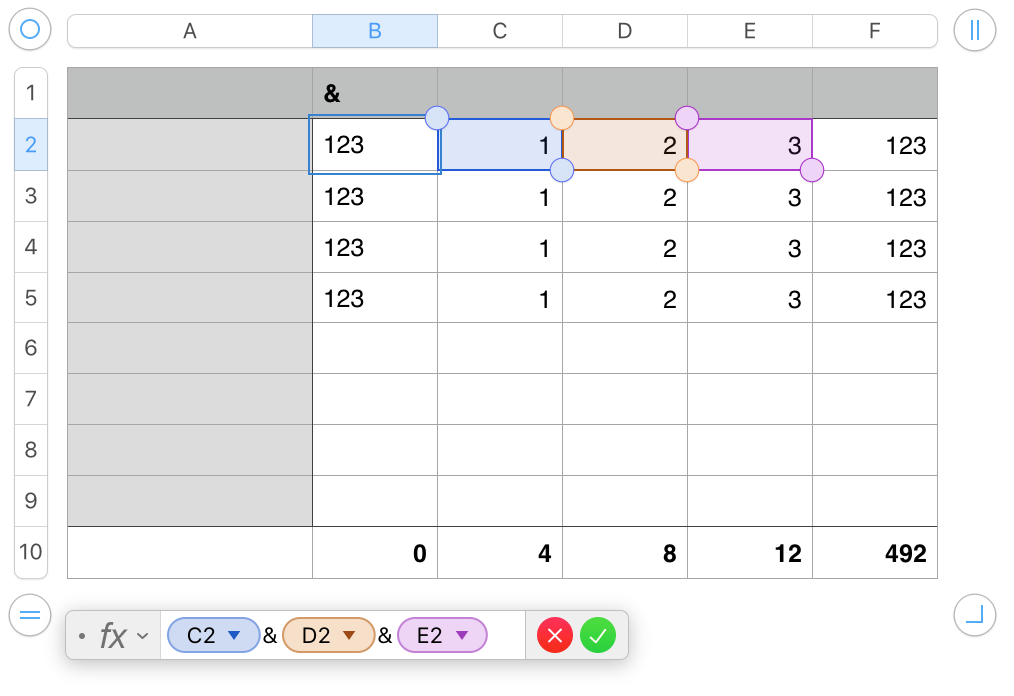There is always a "value cell" in the range.
Whatever content is displayed in a cell is a "value", "number" and "text" are different types of value, as are "durations" , and "date and time values".
Assuming the values you want to sum are in a single column (column B, for the example),, you might try this:
Add a new column to the table. In the example, I added column F.
In the example, the values in columns C, D and E are numbers.
Column B contains this formula, entered in B2, and filled down to B5: C2&D2&E2
The formula joins the characters displayed in the three named cells into a single text string, as displayed in the column.
Row 10 has been converted to a Footer row to permit using a 'whole column' reference rather than a defined range in the SUM formula in each cell of that row. Each cell, except A10, contains the formula SUM(B) with B replaced by the letter of the column containing the formula.

As can be seen, the SUM in column B, where all the values are text, is zero.
Sums in columns C, D and E arw correct (as is the sum in column F.
Column F contains this formula, entered in F2, and filled only to F5:
VALUE(B2)
VALUE converts text expressing numbers to the numeric value of the expressed number. Where the 'number' is actually a number, VALUE makes no change.
More on VALUE in the Function Browser.
Regards,
Barry
